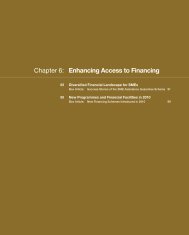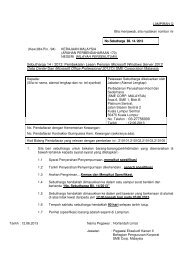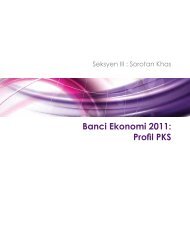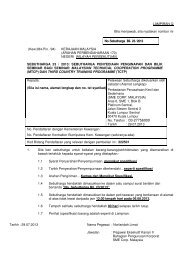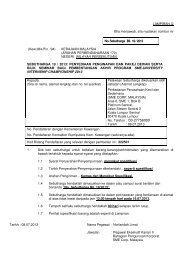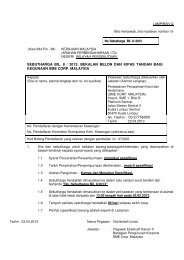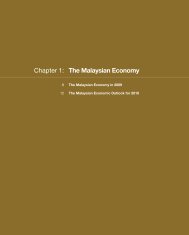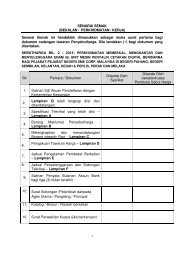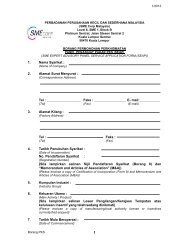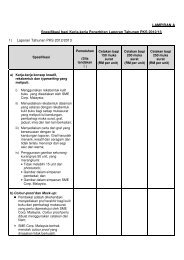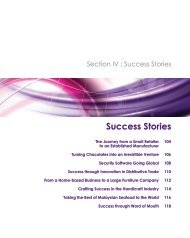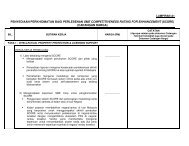Financial Guide for SMEs - SME Corporation Malaysia
Financial Guide for SMEs - SME Corporation Malaysia
Financial Guide for SMEs - SME Corporation Malaysia
You also want an ePaper? Increase the reach of your titles
YUMPU automatically turns print PDFs into web optimized ePapers that Google loves.
<strong>Financial</strong> <strong>Guide</strong> <strong>for</strong> <strong><strong>SME</strong>s</strong>Step 3: Other Cash InflowsTo complete the cash infl ow in<strong>for</strong>mation in the cash fl ow <strong>for</strong>ecast, you will needto identify any additional cash coming into the business. Of course, the types ofcash infl ows <strong>for</strong> each business will vary, but the following list may help you torecognise other cash infl ows in your business:• Additional equity contribution;• Income tax refunds;• Grants;• Loan proceeds;• Other income sources not included in sales (e.g. royalties, franchise andlicense fees); and• Proceeds from sale of assets.If you are preparing a cash fl ow <strong>for</strong>ecast <strong>for</strong> additional fi nancing, do not <strong>for</strong>getto include the loan funds in your infl ows.Step 4: Cash OutflowsAs we have indicated earlier, one of the major inputs into the <strong>for</strong>ecast is sales.Coupled with this infl ow is the cost of purchasing or manufacturing those goodsto sell. There<strong>for</strong>e, when determining your cash outfl ows, it is suggested <strong>for</strong> youto calculate the cost of goods sold in line with your sales <strong>for</strong>ecast. By doing this,if you need to change your sales numbers, an automatic change to the cost ofgoods sold fi gure should occur. Many computer programmes will allow you toset up a link between two items, such as your sales and cost of goods sold, tomake the process of <strong>for</strong>ecasting easier. The calculation of cost of goods soldwas discussed in Chapter 1, so you may want to refer back to the section or usethe gross margin percentage discussed in Chapter 4 when estimating the costof goods sold <strong>for</strong> your <strong>for</strong>ecast.ExpensesExpenses are those cash outfl ows relating to the operations of the businessand those that are not included in the cost of goods calculation. These are oftenreferred to as ”administration” or ”operational” expenditure. Again, the itemsof expense will depend on the type of business you are starting or currentlyoperating. One of the important areas to focus on when <strong>for</strong>ecasting expensesis the classifi cation. Remember in Chapter 4, the difference between fi xed andvariable expenses was discussed. When putting together your <strong>for</strong>ecast, thevariable expenses will be directly related to the <strong>for</strong>ecast sales numbers. So ifyou adjust your sales, these expenses will need to be amended in line with thesales adjustment. Of course, the fi xed expenses will remain the same, althoughyou may need to consider adjusting these <strong>for</strong> increases (e.g. infl ation).75Chapter 6 p66-78 Eng.indd 758/15/11 5:02:25 PM



